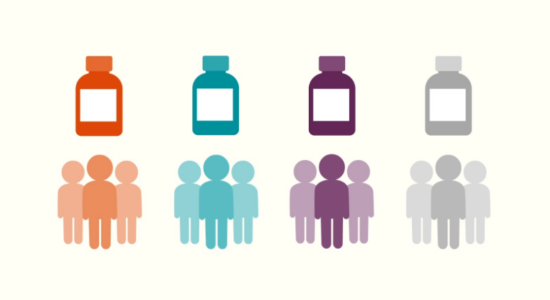Relax Comorbidity Criteria in Cancer Trials?

Relax Comorbidity Criteria in Cancer Trials?
More than 6,000 additional patients could be enrolled each year
by Ian Ingram, Deputy Managing Editor, MedPage Today January 14, 2019
As efforts are being made to improve enrollment in cancer trials, a new SWOG study found that physicians were less likely to even discuss or offer clinical trial participation when patients had comorbidities.
Among over 5,000 cancer patients surveyed, 37.2% of those with at least one comorbid condition had discussions about clinical trials compared with 44.1% of those with no comorbidities (OR 0.86, 95% CI 0.75-0.97, P=0.02), reported SWOG biostatistician Joseph M. Unger, PhD, of Fred Hutchinson Cancer Research Center in Seattle, and colleagues.
Trial offers and subsequent participation were also less frequent in patients with comorbidities compared to those with none:
Offers: 15.7% vs 21.7% (OR 0.82, 95% CI 0.70-0.96, P=0.02)
Participation: 7.8% vs 11.3% (OR 0.76, 95% CI 0.61-0.94, P=0.01)
“Even though it’s been assumed that comorbid conditions exclude patients from trials, there’s actually very little — almost no research — that’s identified this association using patient-level data,” Unger said in an audio interviewthat accompanied the study in JAMA Oncology.
The trend has been one where patients with comorbidities are too frequently excluded, he said.
“For clinical trialists, one goal is to recruit patients who have similar clinical profiles in order that they can accurately tease out whether a new drug or intervention is causing improvements in outcomes,” Unger explained. “One criticism of this is that it leads to clinical trial cohorts that are not representative of the real-world cancer population.”
Recently, the American Society of Clinical Oncology (ASCO), Friends of Cancer Research, and the FDA reviewed the comorbid conditions that are generally used in eligibility criteria to exclude patients, and recommended that many be modified or liberalized.
“This would have many benefits both for patients and physicians if this were done,” said Unger.
Less than 5% of cancer patients are enrolled in clinical trials each year, according to previous research. Unger’s group estimated that if ASCO’s comorbidity restrictions were removed from trial inclusion criteria (these include hepatic and renal dysfunction, cardiovascular disease, and a history of cancer), 6,317 more patients could be enrolled in trials each year.
In the audio interview, co-author Dawn L. Hershman, MD, of Columbia University Medical Center in New York City, said that physician bias may be part of why trials aren’t discussed with some patients. “We all come to the table with certain biases,” she said. “When we see patients are on medications — maybe this may represent a certain level of frailty that is not always so captured by comorbidities alone — we make an assumption that the patient’s not going to be interested in, or not going to be eligible without really checking.”
In an accompanying editorial, S. Percy Ivy, MD, of the National Cancer Institute in Bethesda, Maryland, and colleagues highlighted some of the limitations of the findings, one of which was that in an earlier analysis of these data, the study authors had cautioned that findings with P-values >0.01 be interpreted with caution due to the number of statistical tests that had to be performed.
Ivy’s group also noted that the study used a convenience sample and that the make-up of the participants — who were “younger, wealthier, more educated, more health literate, and more likely to be white” — do not reflect the general population of cancer patients.
But the editorialists agreed that modernizing trials by removing or relaxing restrictions on comorbid conditions in eligibility criteria is needed to improve participation.
“However, eligibility criteria represent just one of many potential barriers to clinical trial enrollment,” they wrote. “Continued efforts to address these barriers will allow oncology practitioners to discuss clinical trial enrollment with their patients in a more realistic environment and to guide and support them through the decision-making process.”
The SWOG Cancer Research Network study from Unger’s group included 5,499 participants who had been diagnosed with cancers of the lung, colorectal, prostate, or breast. Most patients were white (94.4%), 78% were under age 65 (mean age 56.6), and 62.6% were women. The main findings were adjusted for cancer type and sociodemographic variables including age, sex, race, household income, and college education.
Roughly a third of patients (34.4%) had no comorbidities, while 27.8% had one comorbid condition and the remaining had two or more. Hypertension was the most common comorbid condition (35.0%), followed by vision loss (16.6%), arthritis (15.3%), asthma (11.5%), hearing loss (11.2%), and prior cancers (10.2%).
The study was funded in part by grants to the SWOG Cancer Research Network from the National Cancer Institute, the HOPE Foundation, and the Susan G. Komen Research Foundation.
Unger, Ivy, and co-authors disclosed no relevant relationships with industry.
Article via MedPageToday.com
Image via MS Society
